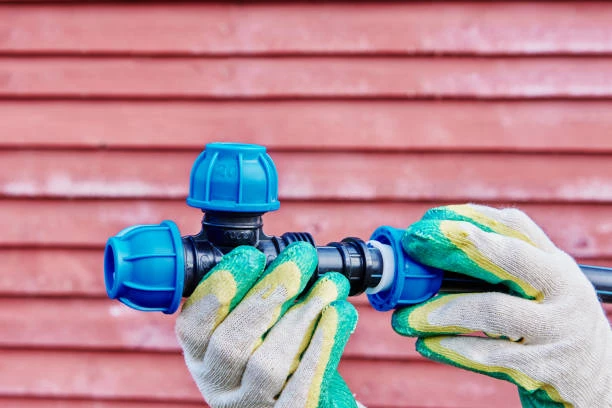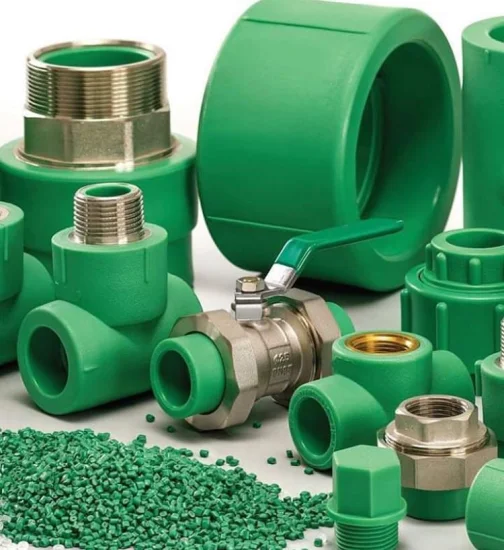1. Introduction to HDPE Pipe Fittings
HDPE pipe fittings have revolutionized piping systems globally, replacing traditional materials like iron, steel, and PVC due to their superior characteristics. The HDPE pipe fitting market will experience significant growth in 2024. Increased infrastructure projects, sustainability trends, and cost-effective piping solutions will drive this growth.
2. What is HDPE?
HDPE stands for High-Density Polyethylene, a thermoplastic polymer made from petroleum. It is known for its high strength-to-density ratio, making it one of the most commonly used materials in pipe manufacturing. HDPE pipes are lightweight, strong, and capable of withstanding harsh environmental conditions, making them ideal for numerous applications.
3. Significance of HDPE Pipe Fitting in Infrastructure
HDPE pipe fitting play a crucial role in ensuring the durability and efficiency of piping systems in various industries. As global infrastructure demands continue to grow, industries increasingly adopt HDPE pipe fittings for water, gas, and sewage transport. Their reliability and long-lasting performance contribute to this trend.
4. Applications of HDPE Pipe Fitting
Water Supply and Distribution
HDPE pipes are widely used in water supply systems due to their resistance to corrosion and ease of installation. They are ideal for municipal water distribution, providing leak-proof solutions for decades.
Gas Pipelines
The flexibility and durability of HDPE make it a preferred choice for gas distribution networks. It ensures the safe transportation of natural gas with minimal risk of leakage.
Sewage Systems
In sewage systems, HDPE pipes help reduce blockages and resist damage from chemicals or harsh environmental factors. Their long service life makes them suitable for large-scale sewage management projects.
Agriculture and Irrigation
HDPE pipe fittings are also crucial for irrigation in agriculture, offering efficient water management solutions in farming.
5. Advantages of HDPE Pipe Fitting
Durability
HDPE pipe fittings are known for their long-lasting nature, with a service life of over 50 years under ideal conditions.
Corrosion Resistance
Unlike metal pipes, HDPE does not corrode, making it perfect for water and gas pipelines in areas with varying soil and environmental conditions.
Flexibility
The material’s flexibility allows HDPE pipes to be laid over difficult terrain, reducing the need for extensive excavation.
Environmental Benefits
HDPE is recyclable, contributing to its sustainability. Its low failure rate also reduces maintenance costs and environmental impact.
6. Challenges Faced by the HDPE Pipe Fitting Market
Despite its numerous benefits, the HDPE pipe fitting market faces several challenges. These include fluctuating raw material prices, competition from other materials like PVC and steel, and the need for skilled labor for installation.
7. Key Market Drivers for HDPE Pipe Fitting in 2024
Several factors are driving the growth of the HDPE pipe fitting market, including:
- Increasing urbanization and infrastructure development.
- Government investments in water management and gas pipeline projects.
- The shift toward sustainable and eco-friendly materials.
- Advances in HDPE technology that improve its performance and lifespan.
8. Global HDPE Pipe Fitting Market Segmentation
Type
- HDPE Elbows
- HDPE Tees
- HDPE Reducers
Application
- Water Supply
- Gas Pipelines
- Sewage Systems
- Agriculture and Irrigation
Region
- North America
- Europe
- Asia-Pacific
- Latin America
- Middle East & Africa
9. Competitive Landscape
The HDPE pipe fitting market is highly competitive, with several key players competing for market share. Companies are focusing on innovation, product quality, and expanding their global presence.
10. Major Manufacturers in the HDPE Pipe Fittings Market
Some of the leading manufacturers in the HDPE pipe fitting market include:
- JM Eagle
- Aliaxis Group
- Advanced Drainage Systems
- Chevron Phillips Chemical Company
- Pipelife International
11. Technological Advancements in HDPE Pipe Fittings
Technology plays a pivotal role in the evolution of HDPE pipe fitting. Innovations such as improved jointing techniques and smart piping systems are expected to enhance the efficiency of HDPE pipelines, further driving market growth.
12. Market Trends to Watch in 2024
Several trends are set to shape the HDPE pipe fitting market in 2024, including:
- The rise of smart water management systems.
- Growing demand for sustainable infrastructure materials.
- Increased use of HDPE in renewable energy projects.
13. Impact of Regulations on HDPE Pipe Fittings Market
Government regulations related to water conservation, gas distribution, and environmental sustainability will impact the HDPE pipe fittings market. Regulatory standards encourage the adoption of materials like HDPE that offer eco-friendly and efficient solutions.

14. Forecast for HDPE Pipe Fitting Market Growth (2024-2030)
The HDPE pipe fittings market is expected to grow at a steady pace from 2024 to 2030, with increasing investments in infrastructure and a growing preference for durable, cost-effective piping solutions. The market is projected to reach new heights, driven by rising demand in emerging economies.
15. Conclusion
The HDPE pipe fittings market is set for remarkable growth in 2024, driven by its widespread applications, environmental benefits, and the increasing need for efficient infrastructure solutions. As industries shift towards sustainable and reliable piping systems, HDPE will continue to be a key player in shaping the future of water, gas, and sewage management systems.
FAQs
- What are HDPE pipe fitting? HDPE pipe fittings consist of high-density polyethylene and connect HDPE pipes in various infrastructure systems. These systems include water supply, gas pipelines, and sewage.
- Why is HDPE popular in the piping industry? HDPE offers durability, flexibility, corrosion resistance, and environmental sustainability. These qualities make it a top choice for modern infrastructure projects.
- What industries use HDPE pipe fitting? Industries use HDPE pipe fittings in water distribution, gas supply, sewage management, and agriculture.
- How long do HDPE pipes and fittings last? HDPE pipes and fittings typically have a lifespan of over 50 years under optimal conditions.
- What is the growth forecast for the HDPE pipe fitting market? The market is expected to grow steadily from 2024 to 2030, with increased demand driven by infrastructure projects and sustainability initiatives.


















